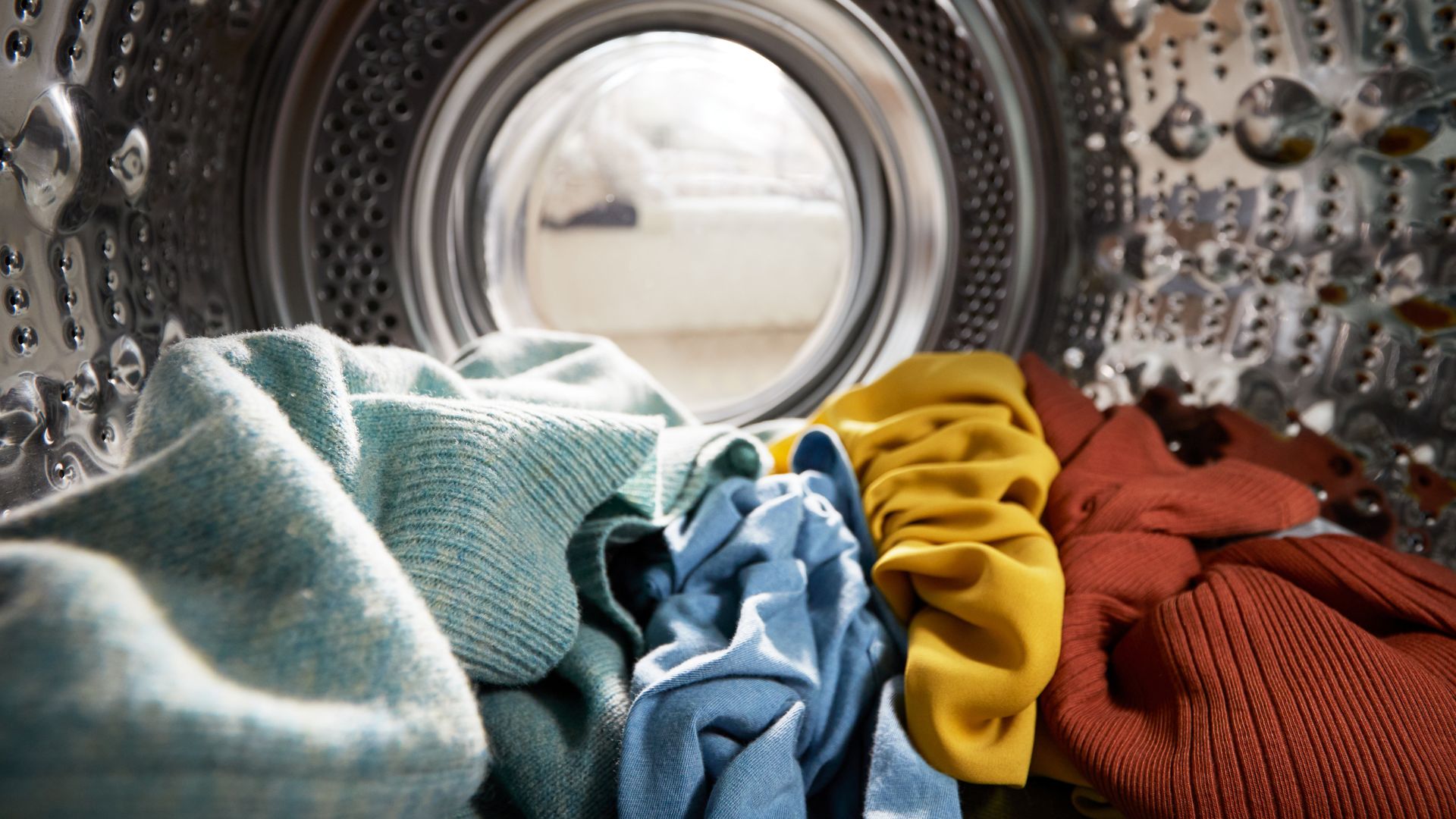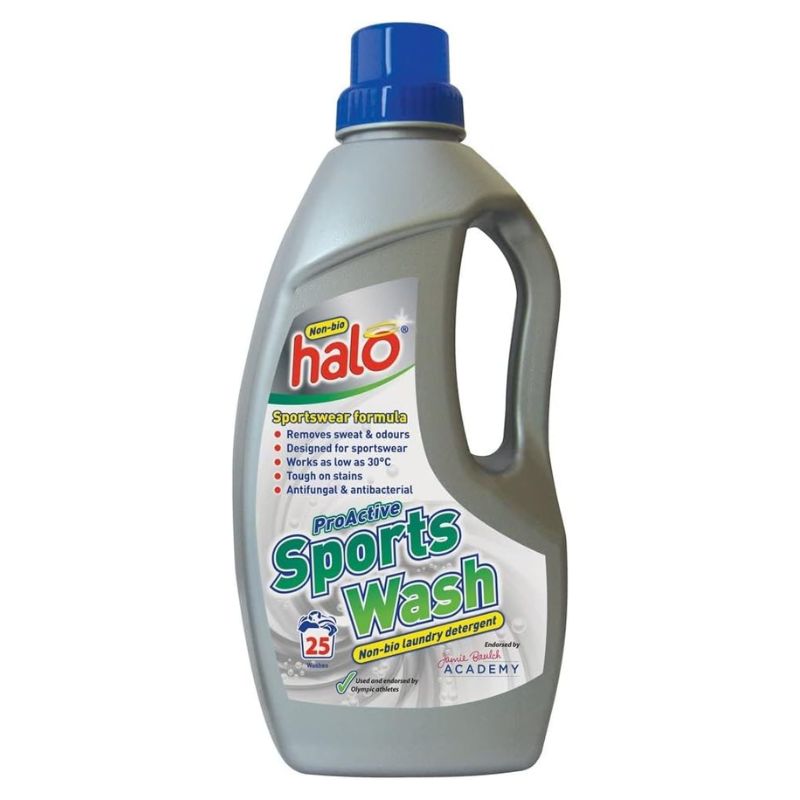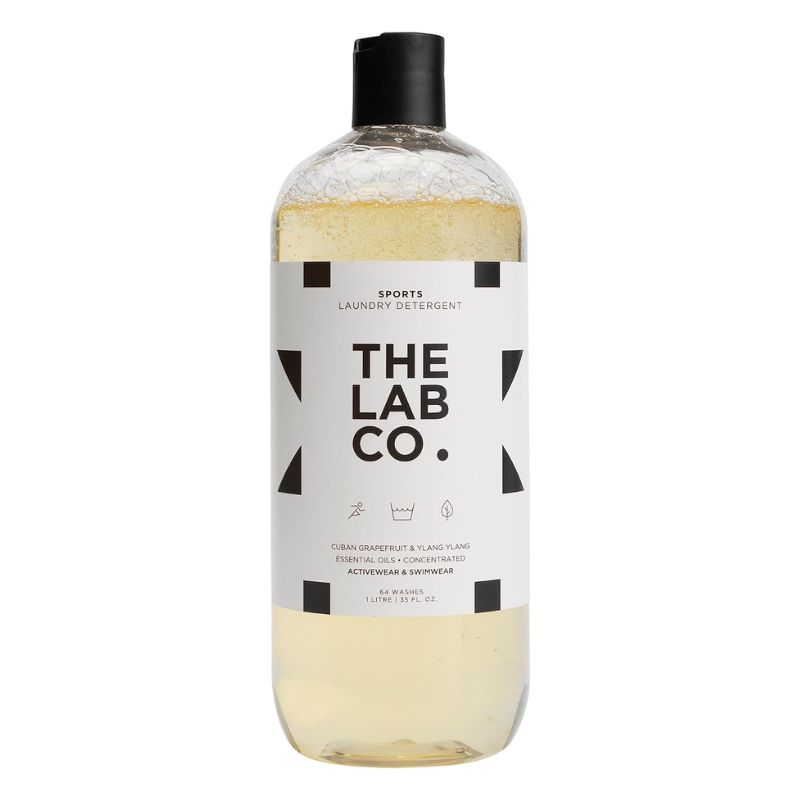Experts reveal how to wash gym clothes and get rid of lingering odours for good
Wondering how to wash gym clothes to get rid of stubborn stains and strong smells? Susan Griffin asks industry experts for their top tips.


After a sweaty workout, it can be all too easy to throw your gym clothes in the washing machine with little to no thought. It is understandable - life gets busy, but knowing how to wash gym clothes is key to maintaining the strength of your sports bra, removing stubborn stains, and getting rid of lingering smells.
From your pair of best workout leggings and gym tops to your pick of the best running shoes for women, whether it's strength training, racket sports or running, workout gear goes through a lot. It deserves a little TLC to keep it smelling fresh, looking its best, and functioning well.
"Sweat and bacteria left on sportswear from an insufficient wash cycle can lead to bacteria imbalance, odour build-up, skin irritations and even fungal infections,” says Joshua Gilbertson, founder of the sustainable detergent company The Lab Co.
“Odour build-up can degrade the performance and longevity of the technical fabrics used in sportswear as well," he notes. "Sweat is very salty and if sportswear is not washed properly, the salt in your sweat can cause damage to the fabric fibres and ruin your activewear. Likewise, deodorants and antiperspirants can contain heavy metals, which again can harm your activewear if not laundered thoroughly."
How to wash gym clothes
1. Get to it right away
Laundry might not be the first job on your mind post-workout, but you do not want sportswear stewing in its nastiness. If you can, get a head start at the gym by leaving your kit to air dry as much as possible before placing it in your laundry bag, says Gilbertson. "But ideally, wash it straight away to prevent bacterial growth and build-up."
If that's not an option, try and let it dry out before putting it in the laundry basket. As Ali Malik, personal trainer and founder of Fit Labs Kensington, says, “Hanging sportswear to air out and dry immediately after workouts (helps to) prevent bacteria growth and odours.”
2. Turn your activewear inside out
Another way to tackle lingering sweat smells - especially the particularly stubborn ones around the armpits - is to turn your gym clothes inside out before washing them to maximise the cleaning process.
Sign up to our free daily email for the latest royal and entertainment news, interesting opinion, expert advice on styling and beauty trends, and no-nonsense guides to the health and wellness questions you want answered.
This is especially important to do to workout leggings with pockets, your pick of the best running shorts, and tops with sleeves as underarms and areas between the legs will naturally accumulate more bacteria as you sweat.

Turning gym clothes inside out in the washing machine can help to target the hard-worn areas of activewear.
3. Try a specialist sports wash
Your regular go-to detergent is totally fine for washing your gym clothes. However, if you're having issues with stubborn smells, mud or grass stains, it's worth investing in a specialist sports wash. “A mild, sports-specific detergent [will help to] remove sweat, odour, and bacteria without compromising moisture-wicking properties,” says Malik.
These washes, unlike regular detergents, contain ingredients that are specially formulated to get deep into the fibres of the clothing and wash away sweat build-up. Ingredients like zinc ricinoleate get rid of odour even at low temperatures. It's also formulated to work on (and not damage) unique fabrics like Gore-Tex®.

Size: 1 litre
Washes per bottle: 25
Halo is one of the original sportswash brands. If you've had your activewear for a few years and can't seem to shift stubborn sweat smells and stains, this one could be for you. It's more expensive than other options but almost 1,000 5-star reviews promise it does the job well at 30 degrees.
4. Put trainers in a mesh bag
Whether it is boggy terrain, slushy puddles, or sweat-soaked workouts, trainers are put through the wringer, and can end up unpleasant to look at – and smell – if they are not cleaned regularly.
“As a general rule, avoid washing trainers with leather or suede elements, or glued-on details as these fabrics are not usually machine washable,” says Vivien Fodor, Laundry Category Manager at Hotpoint. “Remove any loose dirt, as well as laces and insoles to wash separately. Place trainers inside a mesh washing bag to keep them together and protect them from any damage."
If you don’t have a designated shoe wash cycle, she says, then use a cold wash “Delicate” cycle to protect fabrics. "After your wash has finished, reshape the trainers using clean clothes [pushed down into the soles] to hold their shape as they dry," she says.
5. Add vinegar to remove odours
Cleaning with vinegar is common in kitchens and bathrooms but did you know your activewear could benefit from it too? The acidity in this kitchen staple means it fights odour-causing bacteria.
"Vinegar acts as a natural deodoriser and can help break down bacteria that cause smells, leaving your activewear fresh and clean. Add a half cup of white vinegar to the rinse cycle when washing sportswear to help eliminate stubborn smells,” says Amanda Place, personal trainer and founder of Sculptrition.
You can also use it as part of a pre-soak process. Leave it in a bowl with a half-and-half mixture of white vinegar and water to help deal with lingering smells and loosen up any stains.
6. Don't overdo the detergent
While adding more detergent might seem intuitive to give workout clothes a ‘better’ clean, it's actually counterproductive. The soap can build up in the washing machine, trapping odours and encouraging mould to grow, which can then transfer onto your clothes.
It can also impact the fabric of your sportswear, says Malik. Sports clothes are typically made from synthetic fabrics out of necessity, given that we need them to wick away sweat and not absorb it during a heavy workout, and synthetic materials don’t react well to strong detergents or hot temperatures.
7. Avoid fabric softener
Malik admits that, like many people, he used to use fabric softener to soften sportswear. “However, I learnt that it could leave a residue that clogs fabric pores, reducing breathability and moisture-wicking capabilities,” he says.
As Martyn Oakey, the head of fitness at Everlast Gyms (part of Sports Direct) notes, “Moisture-wicking materials don’t absorb fabric softener in the same way as perhaps your regular clothing will. Instead, it can create a coating on the surface that can lead to a build-up of bacteria.” In short, give the fabric softener a wide berth.
8. Handwash your sports bra
A pick of the best sports bras is essential for support and comfort when exercising - but as we all know, they aren't cheap. Knowing how to wash gym clothes and specifically, how to wash a sports bra, is very important to make sure these investments last.
"A dirty sports bra is a breeding ground for bacteria caused by perspiration so it’s important to wash your bra after every workout, even if you don’t feel that you’ve got particularly sweaty,” says Georgina Bibby, lingerie expert at NEXT.
“Hand washing is the best method for ensuring it keeps its elasticity and shape. Soak it in warm water for around 20 minutes and use a gentle hand washing detergent to clean it thoroughly," she says. As noted, avoid fabric softener because it can break down the fabric and elastic over time, and be sure to rinse the bra afterwards. If you're washing your best high-impact sports bras, you may want to leave it to soak for an hour before washing to give the detergent a chance to work through.
"If you do have to use the washing machine, place the sports bra in a laundry bag to ensure it maintains its shape and doesn’t get damaged. Air dry it afterwards by laying it flat on a towel or drying rack and avoid hanging it by the straps as this can cause it to stretch."

Size: 300ml to 1 litre
Washes per bottle: 20 to 64
The Lab Co.'s sportswear wash is a non-bio detergent, vegan and cruelty-free, free from harsh chemicals, and available in multiple sizes. It's formulated with essential oils, such as ylang-ylang, as well to deliver freshness and deodorisation.
FAQs
Can I put gym clothes in the washing machine?
Yes, you can wash all types of gym clothes in the washing machine. Many types of gym and running trainers can also be washed in there too - just make sure to read the care label before you do so and use a mesh bag.
"Some washing machines have 'Sports' and 'Shoes' cycles specifically designed to clean these items. They use a gentle wash action with low spin speed to avoid damage," says Hotpoint's laundry expert Vivien Fodor, so be sure to choose this cycle if you're concerned about your kit.
Can I wash gym clothes at 30 degrees?
Yes, you can wash gym clothes at 30 degrees - and it's far better if you do so! A hot wash (over 40 degrees) can damage the fabric, so to ensure the longevity of your sportswear, wash your workout wear at cooler temperatures - between 20 and 30 degrees.
"Most sportswear is made from moisture-wicking fabrics such as nylon or polyester. These kinds of synthetic materials don't do well in high-temperature washes as fibres can be damaged, reducing the lifespan of your garment, so it’s best to keep them on a cool wash,” says Oakey.
Can I put gym clothes in the tumble dryer?
It's not advisable to tumble dry your sportswear. "As with washing your clothes, exposing them to high temperatures in the tumble dryer will only damage the fibres and ruin the quality of your garments. You’re best air-drying your workout wear to keep from unnecessary damage," says Oakley. "However, if you do need to speed up the process by tumble drying your clothes, make sure you keep your dryer to a low temperature."
Whenever possible, air dry your gym clothes on a clothes rack or laundry line. This will preserve the quality of the fabric and prevent the static that often clings to clothes when they come out of the tumble dryer.
How often should I wash workout clothes?
There is no definitive set of rules as to how often you should wash your workout clothes - but most items will need a spin in the washing machine after you use them once or twice.
If you're doing a gentle workout with minimal sweating - wall Pilates or yoga, for example - then you might find your kit still feels good as new after a couple of sessions. However, if you're running 30 minutes a day or doing heavy strength training in the gym then you'll find you'll need to wash your kit after every go.
Naturally, when it comes to washing your gym kit, it's a good idea to think about how you can do it sustainably as well. Gilbertson has some suggestions: "Use eco-friendly detergents. Natural formulations will ensure your activewear stays clean without causing damage to the performance of the fabrics [or the planet]," he says.
"Invest in durable activewear as it will reduce the frequency of replacements. The delicate performance-driven fabrics don’t require long wash cycles and opt for hand washing where possible."
If you are going to use the washing machine, do a full load so as not to waste water and as discussed previously, it is always best to air dry than use the tumble dryer.
How to store gym clothes for better hygiene
- Fold, don’t hang: Instead of hanging sportswear, which can stretch out fabrics and cause them to lose their shape, fold them neatly, says Place.
- Rotate regularly: If you have a large collection of sportswear, consider rotating your wardrobe regularly to prevent overuse of specific items, she says.
- Store shoes properly: Keep athletic shoes in a well-ventilated area away from direct sunlight. Stuff them with tissue paper or shoe trees to help maintain their shape, says Place.
- Avoid overcrowding: Avoid cramming too many items into storage spaces, as this can lead to wrinkles and creases in fabrics. Give each item enough space to maintain its shape, she says.
A journalist with two decades of experience, Susan interviewed A-list names in film and TV before going freelance and focusing on health, wellbeing, and lifestyle features. She has since spoken to world-renowned experts on the most innovative and effective ways to look after your mind and body; her work appearing in publications such as Daily Express, Daily Mirror, Metro, Fabulous and The Telegraph. When Susan isn’t working on her laptop, she is most content hiking in the Peak District or finding quiet camping spots to while away a weekend and knows first-hand the restorative benefits of being outdoors.
